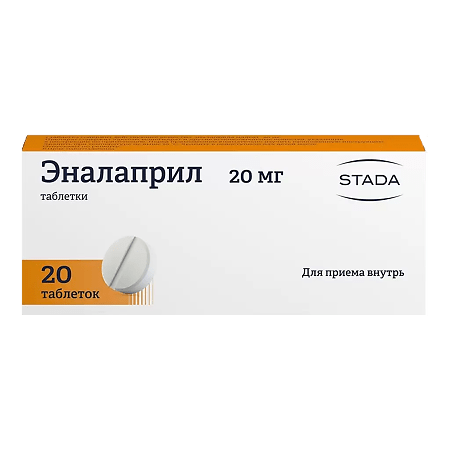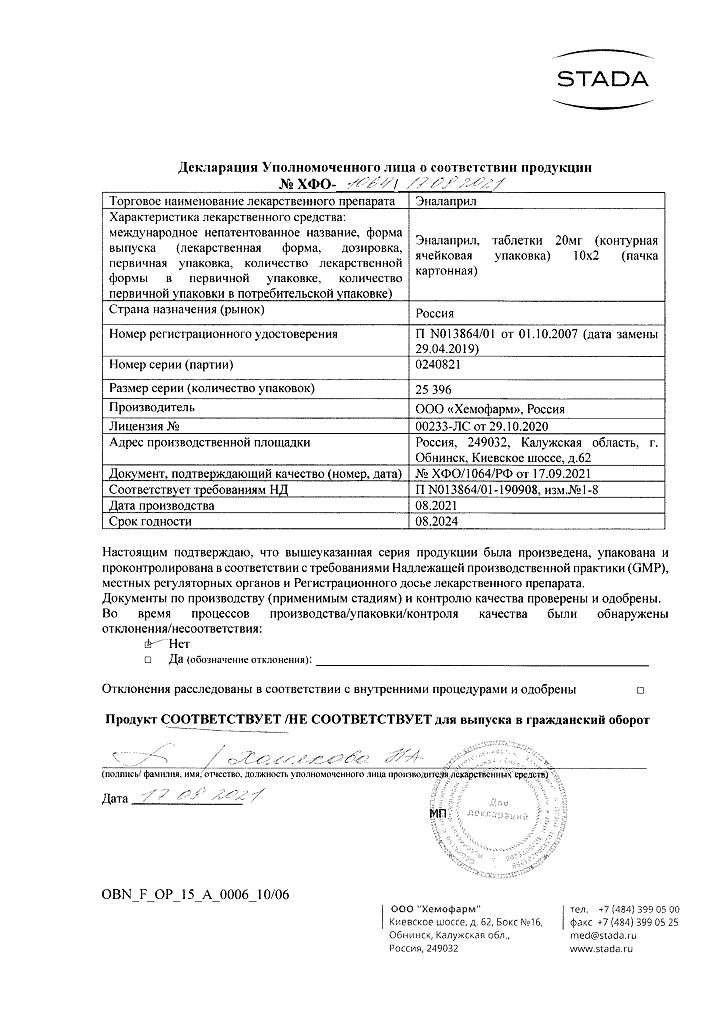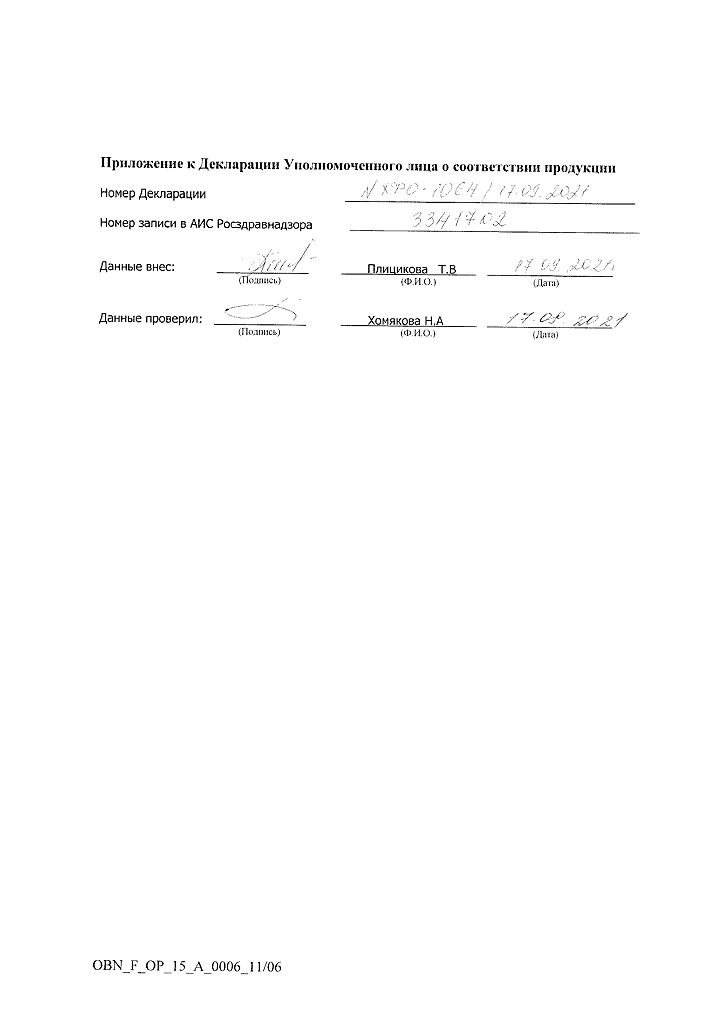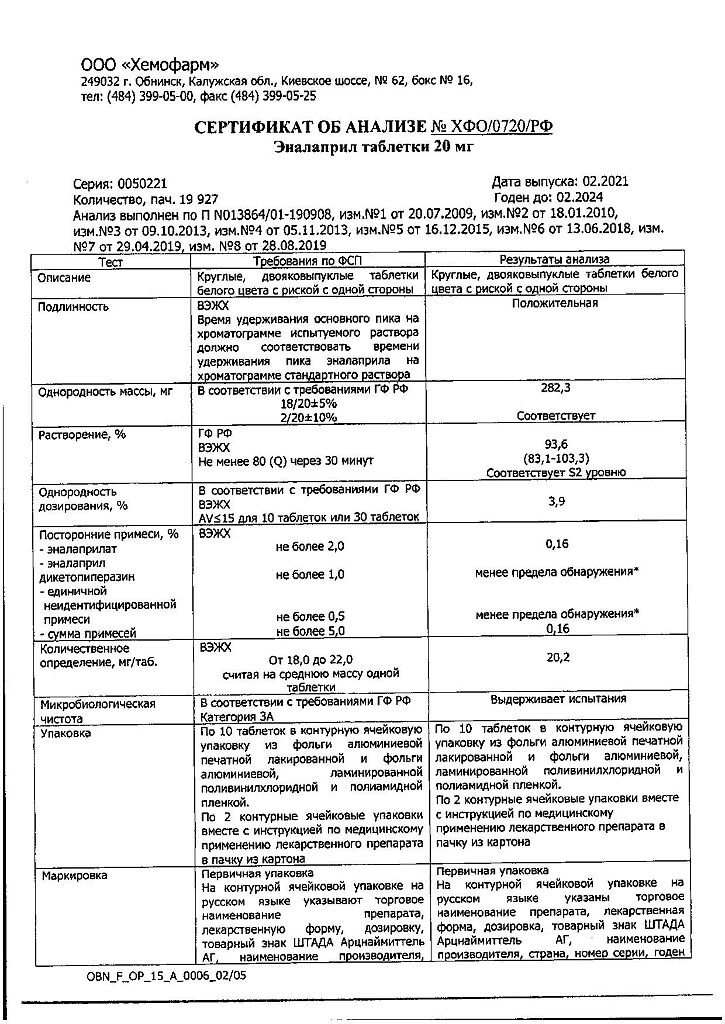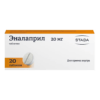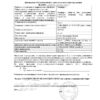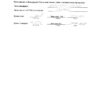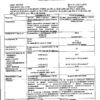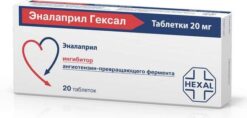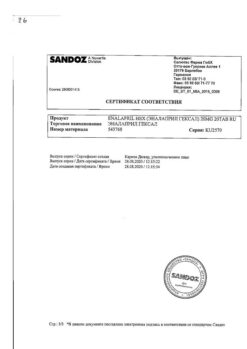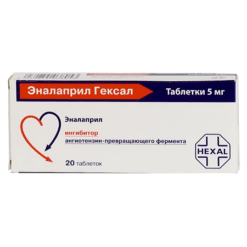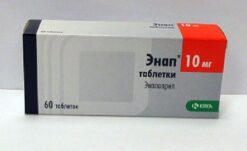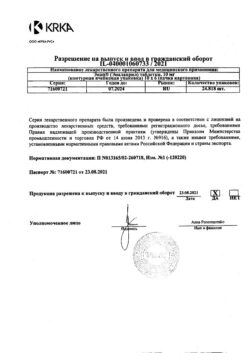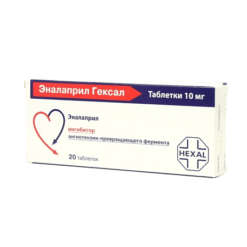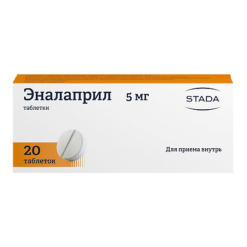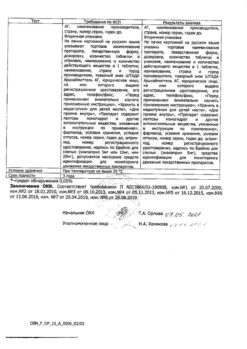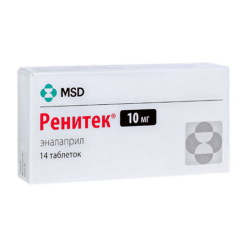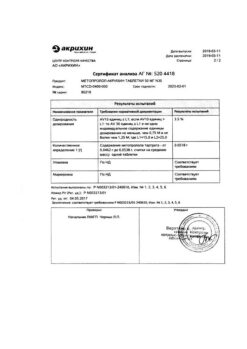No products in the cart.
Enalapril, tablets 20 mg 20 pcs
€3.29 €2.74
Description
Pharmgroup:
A ACE inhibitor.
Pharm action:
The ACE inhibitor is a hypotensive drug; its mechanism of action is related to reduction of formation from angiotensin I of angiotensin II, reduction of concentration of which leads to direct reduction of aldosterone secretion.
In this case, it decreases RPS, systolic and diastolic BP, post- and preload on the myocardium. It dilates arteries to a greater extent than veins, and there is no reflex increase in HR.
Decreases bradykinin degradation, increases Pg synthesis. Hypotensive effect is more pronounced at high plasma renin concentration than at normal or reduced concentration.
The decrease of BP within therapeutic limits has no effect on cerebral blood flow; blood flow in cerebral vessels is maintained at a sufficient level even against the background of reduced BP.
Enhances coronary and renal blood flow. With prolonged use it decreases LV myocardial hypertrophy and myofibrillar resistance arterial walls, prevents the progression of CHF and slows the development of LV dilatation.
It improves blood supply to ischemic myocardium.
Limits platelet aggregation. Prolongs survival in patients with CHF and slows the progression of LV dysfunction in patients who had myocardial infarction without clinical manifestations of CHF.
It has some diuretic effect. It reduces intracolumnar hypertension, slowing down the development of glomerulosclerosis and the risk of CKD.
Enalapril is a “prodrug”: its hydrolysis produces enalaprilate, which inhibits ACE.
The time of onset of hypotensive effect with oral administration is 1 hour, it reaches a maximum after 4-6 hours and lasts up to 24 hours.
In some patients, therapy for several weeks is necessary to achieve optimal BP levels. In patients with CHF, significant clinical effect is observed with long-term treatment of 6 months or more.
Indications
Indications
Active ingredient
Active ingredient
Composition
Composition
How to take, the dosage
How to take, the dosage
Interaction
Interaction
Enhances the effect of ethanol, slows excretion of Li+.
Weakens the effect of drugs containing theophylline.
Hypotensive effect is decreased by NSAIDs including selective COX-2 inhibitors, estrogens; it is increased by diuretics, other hypotensive drugs (beta-adrenoblockers, methyldopa, nitrates, BICC, hydralazine, prazosin), drugs for general anesthesia, ethanol.
Potassium-saving diuretics and potassium-containing drugs increase the risk of hyperkalemia.
Drugs that cause bone marrow suppression increase the risk of neutropenia and/or agranulocytosis.
When concomitant use of ACE inhibitors and gold drugs for parenteral use (sodium aurothiomalate) a symptom complex including facial hyperemia, nausea, vomiting and decrease in blood pressure has been described.
Simultaneous use with insulin and oral hypoglycemic agents increases the risk of hypoglycemia.
Immunosuppressants, allopurinol, cytostatics increase hematotoxicity.
Special Instructions
Special Instructions
Synopsis
Synopsis
Features
Features
Contraindications
Contraindications
Side effects
Side effects
Cardiovascular system disorders: excessive BP decrease, orthostatic collapse, rarely – chest pain, angina pectoris, myocardial infarction (usually associated with a pronounced BP decrease), arrhythmias (atrial bradycardia or tachycardia, atrial fibrillation), palpitation, pulmonary artery thromboembolism.
Nervous system disorders: dizziness, fainting, headache, weakness, insomnia, anxiety, confusion, increased fatigue, somnolence (2-3%), very rarely with high doses – nervousness, depression, paresthesia.
Sensory system disorders: vestibular system disorders, hearing and vision disorders, tinnitus.
Digestive system disorders: dry mouth, decreased appetite, dyspeptic disorders (nausea, diarrhea or constipation, vomiting, abdominal pain), intestinal obstruction, pancreatitis, liver function and biliary excretion disorders, hepatitis, jaundice.
Respiratory system: non-productive “dry” cough, interstitial pneumonitis, bronchospasm, dyspnea, rhinorrhea, pharyngitis.
Allergic reactions: skin rash, angioedema of the face, small intestine (very rare), extremities, lips, tongue, vocal cleft and/or larynx, dysphonia, exfoliative dermatitis, erythema multiforme
Essudative erythema (including Stevens-Jung’s syndrome).Stevens-Johnson syndrome), toxic epidermal necrolysis (Lyell’s syndrome), pemphigus, pruritus, urticaria, photosensitization, serositis, vasculitis, myositis, arthralgia, arthritis, stomatitis, glossitis.
Laboratory findings: hypercreatininemia, increased concentration of urea, increased activity of “hepatic” transaminases, hyperbilirubinemia, hyperkalemia, hyponatremia,
decreased Hb and hematocrit, increased CRP, thrombocytopenia, neutropenia, agranulocytosis (in patients with autoimmune diseases), eosinophilia.
Urinary system disorders: impaired renal function, proteinuria.
Others: alopecia, decreased libido, “rushes” of blood to the face. Cases of hypoglycemia have been reported in patients with diabetes mellitus who have taken insulin and oral hypoglycemic drugs.
Overdose
Overdose
Similarities
Similarities
Additional information
| Weight | 0.015 kg |
|---|---|
| Shelf life | 3 years. Do not use after the expiration date. |
| Conditions of storage | Store in a dry place at temperatures from 15 to 25C. Keep out of reach of children. |
| Manufacturer | Chemopharm LLC, Russia |
| Medication form | pills |
| Brand | Chemopharm LLC |
Other forms…
Related products
Buy Enalapril, tablets 20 mg 20 pcs with delivery to USA, UK, Europe and over 120 other countries.

